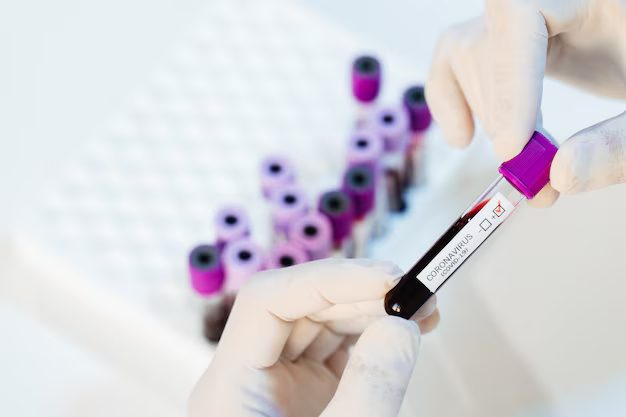How to Understand and Test for Leukemia: What You Need to Know
Imagine experiencing fatigue, unexplained weight loss, or frequent infections without knowing the cause. While these symptoms may be linked to various minor conditions, they could also point to leukemia, a type of cancer affecting blood and bone marrow. But how can one test for leukemia, and what does this process entail? Understanding and identifying this disease is crucial, especially since early detection can dramatically influence outcomes. Let's delve into the topic comprehensively, exploring the tests, interpretations, and what next steps might involve.
What is Leukemia?
To lay the groundwork, leukemia is a type of cancer that affects the blood and bone marrow—the body’s blood-producing factory. Unlike other cancers that form tumors, leukemia is characterized by the excessive production of abnormal white blood cells. These dysfunctional cells overcrowd healthy blood cells, impairing their function and leading to weakened immunity. Let's break down the different types of leukemia to understand why distinct testing methods are necessary.
Types of Leukemia
- Acute Lymphocytic Leukemia (ALL): Fast-growing, prevalent in children.
- Acute Myeloid Leukemia (AML): Rapidly progressing, common in adults.
- Chronic Lymphocytic Leukemia (CLL): Slower onset, often found in older adults.
- Chronic Myeloid Leukemia (CML): Slowly progressing, often seen in adults.
With this basic understanding, let’s look at how these subtypes influence testing procedures.
Common Symptoms That May Warrant Testing
Spotting the symptoms of leukemia early can be lifesaving. While experiencing one or two of these symptoms doesn't indicate leukemia, it's crucial to consult a healthcare provider if multiple symptoms arise. Look out for:
- Persistent fatigue or weakness
- Frequent or severe infections
- Easy bruising or bleeding
- Unexplained weight loss
- Swollen lymph nodes
- Night sweats or fever
Recognizing these signs could prompt a healthcare provider to recommend further testing.
Initial Steps: Consulting a Healthcare Professional
Before testing begins, a crucial first step is consulting with a healthcare provider. Open dialogue about symptoms and medical history is vital. If leukemia is suspected, the provider can conduct a physical examination and may order preliminary blood tests.
Key Tests for Diagnosing Leukemia
Blood Tests: The First Diagnostic Step
Complete Blood Count (CBC): This routine test measures the levels of white blood cells (WBCs), red blood cells (RBCs), and platelets. A significant increase in abnormal WBCs may signal leukemia.
Peripheral Blood Smear: Examining the appearance of blood cells under a microscope can reveal the presence of leukemia cells, also known as blasts.
Bone Marrow Tests: A Closer Look
If initial blood tests suggest leukemia, a bone marrow test provides a more detailed assessment.
Bone Marrow Aspiration: A sample is extracted with a needle for examination.
Bone Marrow Biopsy: A larger marrow sample is obtained to assess cell makeup and structure.
These samples are crucial in confirming a leukemia diagnosis by analyzing the size, shape, and behavior of cells.
Additional Laboratory Tests
Certain laboratory tests provide more insights into the specific type and characteristics of leukemia:
Flow Cytometry and Immunophenotyping: These tests examine specific markers on cell surfaces to distinguish normal cells from cancerous cells.
Genetic Tests and Cytogenetics: Analyzing the chromosomes in cancer cells helps identify specific genetic changes associated with leukemia.
These tests enable healthcare providers to pinpoint which type of leukemia is present, tailoring treatment plans accordingly.
Understanding Test Results
Interpreting your test results can be overwhelming. However, knowing what specific terms mean can clarify the picture.
- Blasts: High levels are a hallmark of leukemia.
- Cytogenetic Tests: Marker identification helps in categorizing leukemia and predicting disease progression.
- Flow Cytometry: The presence of specific markers helps confirm the diagnosis type.
Your healthcare provider can explain these complex findings, offering a clearer understanding of your health status.
Next Steps After Diagnosis
Discussing Treatment Options
Once diagnosed, discussing treatment options with healthcare professionals is paramount. Potential treatments include:
- Chemotherapy
- Radiation therapy
- Targeted therapy
- Stem cell transplant
Each has its pros and cons, which healthcare providers can help elucidate.
Psychological and Emotional Support: An Essential Part of Care
A leukemia diagnosis might lead to emotional upheaval. Seeking psychological support can offer relief and assist in coping with the condition.
- Support Groups: Connecting with others facing similar challenges can provide comfort.
- Counseling and Therapy: Professional guidance helps process emotions and maintain mental well-being.
Monitoring and Follow-ups
Following diagnosis and treatment, regular follow-ups play a crucial role in managing leukemia. Routine blood tests and check-ups ensure that treatments are effective and allow for timely adjustments.
Empowering Yourself with Knowledge and Confidence
Taking active steps to understand how leukemia is tested reassures and empowers individuals. Whether you're supporting a loved one or managing your own health, knowledge is a powerful tool in a fight against leukemia.
Summary of Key Takeaways for Testing Leukemia:
- Symptoms to Watch For: Fatigue, weight loss, infections 🩺
- Initial Tests: CBC, peripheral blood smear 🧪
- Confirmatory Tests: Bone marrow aspiration/biopsy, flow cytometry ⚖️
- Genetic Testing: Chromosomal analyses for specifics 🧬
- Seek Medical Help: Consult professionals if symptoms persist 👩⚕️
- Treatment Options: Chemotherapy, stem cell transplant, and more 💪
- Emotional Support: Counseling and support groups 🤝
- Follow-up Care: Regular check-ups ensure effective management 📅
Understanding this process is the first step in addressing and managing leukemia effectively. By staying informed, one can navigate the journey with confidence and resilience.

Related Articles
- Can Leukemia Be Cured
- How Do Cats Get Feline Leukemia
- How Do They Test For Leukemia
- How Do You Get Leukemia
- How Do You Test For Leukemia
- How High Are Monocytes In Leukemia
- How Is Feline Leukemia Spread
- How Is Feline Leukemia Transmitted
- How Is Leukemia Diagnosed
- How Long Can You Live With Chronic Lymphocytic Leukemia